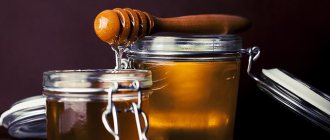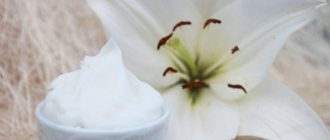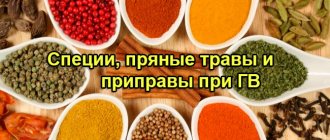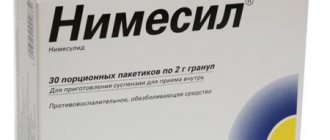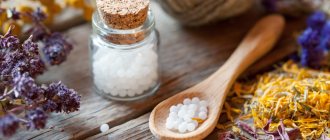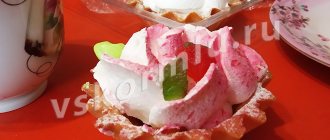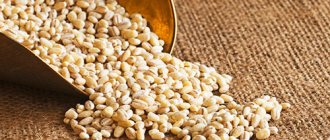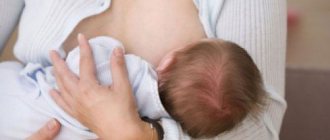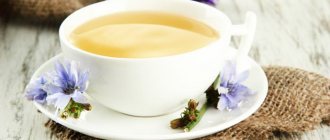Not every medicine can be taken while breastfeeding. This is due to the fact that particles of the drug, penetrating into breast milk, can harm the baby. But there are times when a young mother needs to take a painkiller to relieve pain and spasms caused by one reason or another. Many women resort to no-shpa during breastfeeding. We will try to consider in more detail whether it is possible to take the drug during lactation and how its medicinal properties affect the child.
Is it allowed to take the drug, in what cases is it necessary?
After delivery, many women begin to experience pain in the lower abdomen and pelvic organs. This can be explained by the fact that spastic contraction of the genital muscles occurs in this area. Spasms contribute to disruption of the outflow of blood from the birth canal, which often causes the development of septic complications. It is No-shpa during breastfeeding that is considered an effective remedy suitable for such cases.
In addition, No-spa can have an analgesic effect during breastfeeding. Its effectiveness has been proven for headaches and abdominal discomfort. Still, despite the existing contraindications for use, there are not so many of them in comparison with other means. To avoid dangerous consequences in the form of side effects, read the instructions before using the drug.
Fighting pain: is it allowed and how to take No-Spa while breastfeeding?
During breastfeeding, every mother tries to reduce the use of any medications to the minimum possible.
But often after childbirth, a woman is bothered by discomfort in the lower abdomen associated with contractions of the uterus, headaches from lack of sleep, muscle spasms, etc.
How to cope in such situations? No-spa will help solve many problems during breastfeeding, but when and how much can you take the product?
What will it help with?
The main active ingredient in no-shpe is drotaverine. The standard dosage of the drug is 40 mg, but there are prolonged forms of 80 mg, as well as injectable versions of the drug.
Drotaverine, once in the blood, reaches its maximum concentration within 45-60 minutes. The drug is excreted through the kidneys and intestines (through bile acids) within 2 - 3 days.
Drotaverine disrupts the functioning of certain enzymes that are responsible for the contraction of all smooth muscles. And it is present in almost all structures of the body in varying quantities. The leaders in the content of smooth muscle fibers are all hollow organs, for example, the intestines, bladder, uterus, etc. It is to them that the effect of the drug is mostly directed.
No-spa during lactation is used to relieve the following conditions:
- For spasmodic pain associated with impaired bile outflow. Most often, no-spa is necessary for cholecystitis, cholelithiasis, inflammation of the bile ducts (cholangitis) and papillitis (pathology of the sphincter of Oddi).
- For pain associated with spasms of the gastrointestinal tract. The remedy helps with gastritis or peptic ulcers, with colitis, irritable bowel syndrome, and with disruption of the sphincters of the esophagus and stomach.
- For spasms in the urinary system, which occur, for example, with cystitis, pyelonephritis, pyelitis, urolithiasis and some other conditions.
- An effective remedy for headaches.
- The drug is indicated for dysmenorrhea and lower abdominal discomfort during ovulation.
Despite the popularity of the drug, its use should still be treated with caution and used as recommended or prescribed by a doctor, especially during lactation.
Is it possible with breastfeeding?
There have been no extensive and reliable studies on the safety of no-shpa during breastfeeding; there are only isolated small observations. The latter did not reveal any serious effect of the drug on the baby.
According to the data obtained, drotaverine passes into breast milk in small quantities and cannot have any unwanted effect in such doses.
That is why the medicine is the drug of choice for many conditions associated with spasm of the smooth muscles of internal organs. And if a woman has any problems with the gastrointestinal tract, biliary tract, urinary system, suffers from headaches or menstrual pain, but-spa will be one of the effective and safe drugs for mother and baby.
If a woman is very worried, you can play it safe and take a pill immediately after feeding, and next time give the baby formula. During such a period, more than half of the medicine has already been metabolized, and nothing will definitely reach the child.
How does it affect the baby?
The active substance is unlikely to pass through mother's breast milk to her baby. But it should be borne in mind that the tablets contain lactose as a forming agent. Rarely, but still occurs, intolerance to this carbohydrate in children. Such conditions are associated with lactase deficiency, galactosemia - a small number of enzymes for processing this substance.
As a result, the baby develops digestive problems: bloating, colic, bowel dysfunction, etc. Therefore, mothers should still monitor the baby while taking the pills, both for his general well-being and for the skin (for the appearance of a rash). It should be noted that lactose cannot cause any harm in healthy children.
How to use
It is optimal if the doctor determines whether breastfeeding is possible in each specific case. The maximum daily dose should not exceed 240 mg. The main dosage regimens may be as follows:
- 1 or 2 tablets of 40 mg for two or even three doses.
- If the capsules are 80 mg, then their quantity and frequency of administration should be reduced exactly by half and not exceed the permissible dose.
- If there is no noticeable improvement within two to three days, it is better to seek medical help.
Watch the video about the drug:
pharmachologic effect
Among the main components of the product is drotaverine hydrochloride, an isoquinoline derivative. This substance is a strong antispasmodic and acts on the smooth muscles of the body.
The main active substance helps stimulate dehydration of muscle tissue, reducing the intensity of the inflammatory process. Due to the relaxation of smooth muscles, blood circulation in the internal organs improves . Drotaverine restores natural peristalsis in the digestive tract and helps eliminate pain in this area.
Thanks to long-term practice, I was able to study in detail the effectiveness of No-shpa on many patients, including women breastfeeding their babies.
No-spa during breastfeeding also helps to reduce the tone of the uterus , thereby causing it to contract faster and return to its natural state after childbirth.
The effect of the medicine is not long in coming: according to numerous data, a decrease in pain intensity occurred within 30 minutes after taking the pill.
There were also cases when it was necessary to take the drug in a course. For this period, breastfeeding was stopped, but upon completion of the course it was restored. Despite the effectiveness of the drug, it is still worth considering contraindications.
Drotaverine does not smooth out the clinical picture of any inflammatory process and does not affect the sensitive mechanism in the body, unlike the action of other analgesics.
How does breastfeeding affect lactation and the baby?
The active substance drotaverine hydrochloride has the ability to penetrate into the blood, after which it is concentrated in mother’s milk and enters the child’s body. With a single dose of No-shpa, the likelihood of side effects is small, but with an increase in the dose and frequency of use, the baby may experience:
A nursing mother should continuously monitor the baby’s well-being in order to take timely measures.
Important!
If there are any negative consequences, the child needs medical attention and immediate cessation of taking No-shpa.
When breastfeeding, both short-term medication use and long-term treatment using No-shpa are allowed. Methods of therapy for lactation depend on the nature of the pain and have their own characteristics and dosage
.
One-time use
If a mother takes one tablet, it will not harm the child, since the concentration of active components will be low, and they will quickly leave the body naturally. Within 20 minutes after administration, a woman may notice an improvement in her condition and a decrease in pain.
The maximum volume of the active substance is reached after an hour, so it is better to take the tablet immediately after the next breastfeeding or before it. Compliance with this rule can significantly reduce the concentration of the drug in milk. The dosage for a single dose is 80 mg, which corresponds to one tablet or two 40 mg tablets. You can consume up to 240 mg of the drug per day
.
Long-term use
In special cases, doctors prescribe a course of treatment with No-Spa, since it does not affect the overall clinical picture and does not interfere with the diagnosis, while alleviating the patient’s condition. For serious illnesses, the drug can relieve pain, but the mother will have to temporarily stop breastfeeding so as not to harm the baby.
Milk must be constantly expressed to maintain lactation, and after completion of the course of treatment, with the permission of the doctor, natural feeding can be resumed. If long-term use of No-shpa is necessary, the dosage is determined only by a specialist
, based on the severity of the woman’s condition and the established diagnosis.
In what form should I use it?
The drug is available in two forms:
- Tablets of 40 or 80 mg
. They are convenient to take at home and in emergency situations for severe pain. This is the most common and accessible way of consumption. - 40 mg solution in ampoules
(for intravenous or intramuscular administration). It begins to act almost instantly, but is used primarily in medical institutions. Not recommended for self-treatment.
During breastfeeding, every mother minimizes or completely eliminates the intake of pills, powders and mixtures. But it is unlikely that there will be a mother with good health who has breastfed for a year, or even more, and has not taken a single pill. Each from lack of sleep, a painful stomach during PMS or when the uterus contracts, muscle and other pain. It is not recommended to endure pain, so medications come to the rescue. The most popular antispasmodic is No-spa; when breastfeeding, it helps eliminate many problems. But a reasonable question arises: when and how much can you take it, and is it possible at all?
Antispasmodic No-shpa is the brand name of a drug that is more than 50 years old. No-shpa is produced by a large Hungarian pharmaceutical company. The main active component of No-shpa, drotaverine hydrochloride, was synthesized in the 60s of the last century. Over the decades, pharmacologists have conducted research and found that this is a safe drug with a high degree of effectiveness.
Drotaverine belongs to the category of antispasmodic drugs. It relieves pain caused by spasms of smooth muscles in the abdomen and pelvic organs, reduces the tone of the internal systems of the body, and acts as a vasodilator, for example, it relieves headaches. When breastfeeding, antispasmodics are most often required. If the pain occurs as a result of a spasm, then taking drotaverine will help. The effect of the pill will not erase the clinical manifestations of inflammatory processes, while analgesics simply block the center in the brain that is responsible for the feeling of pain. Therefore, if you suddenly have inflammation of appendicitis and a stomach ache, then with the help of an analgesic you will get rid of the pain, but you won’t even think about calling an ambulance.
Drotaverine is registered in 50 countries around the world, and in Russia it is among the top 20 drugs leading in sales volume.
No-Shpa tablets are used to relieve painful conditions and complex therapy of diseases:
- cramping pain in the lower abdomen due to PMS;
- migraine caused by cerebral vasospasm;
- caused by spasm of the milk ducts;
- problems of the gastrointestinal tract, gastritis, stomach and duodenal ulcers;
- problems of the urinary system, cystitis, pyelitis, urolithiasis;
- inflammation of the small intestine.
Release form
No-shpa is presented in the form of tablets that have a greenish or orange tint, and are round, biconvex in shape. They are engraved with “spa”.
Forms of release of the drug:
- blisters of 6 pieces per pack;
- blisters of 10 pieces per pack;
- blisters of 24 pieces per pack;
- in bottles of 60 pieces, which have a piece dispenser;
- in bottles of 100 pieces, which have a polyethylene stopper;
- in ampoules of 2 ml.
One tablet contains the active ingredient drotaverine in a volume of 80 mg. Among the auxiliary components, it is worth highlighting magnesium stearate (6 mg), talc (8 mg), povidone (12 mg), corn starch (70 mg), lactose monohydrate (104 mg).
One ampoule contains the main substance drotaverine in a volume of 40 mg. Among the excipients, it is worth highlighting such as sodium metabisulfite (E223), ethanol (E1510), and water for injection.
The effect of the drug on infants
Since breast milk is produced by the mother's body, it contains everything a woman eats. That is, the baby indirectly eats the same foods as the mother, only in a slightly different form. Naturally, if a nursing woman takes medications, then to a greater or lesser extent these drugs will be contained in her milk and enter the child’s body, affecting him. In the vast majority of cases, this effect is harmful to the health of the baby.
As for no-shpa, like most systemic antispasmodics, it, without affecting the human central nervous system, has such effects as:
- dilation of blood vessels;
- decrease in muscle tone of internal organs;
- decreased intestinal perilstatics.
The baby will receive all these effects along with breast milk, which will contain the components of no-shpa. And although this medicine is considered one of the safest, it can have a detrimental effect on the fragile body of an infant.
It is impossible to say for sure whether no-shpa can be taken by breastfeeding women, since each specific case must be considered individually, taking into account all the characteristics and clinical indications. Of course, a nursing mother can take no-shpa for an analgesic effect, but not longer than one day. If after this she does not feel any improvement, she needs to resort to other measures. It should also be remembered that the medicine passes into breast milk regardless of the form in which it is taken - in the form of tablets or injections. In any case, the doctor must have the last word.
Indications for use
No-spa during lactation is used to relieve pain of various etiologies , but only as directed by the attending physician. Using it you can eliminate:
- nagging pain in the lower abdomen caused by premenstrual syndrome;
- tension headache;
- postpartum spasm from the genitals;
- pain syndrome from smooth muscles of a spasmodic nature, which is localized in the intestines, stomach or other organs of the gastrointestinal tract;
- pain syndrome from smooth muscles, which is localized in the biliary tract.
In some cases, it can be used to eliminate pain in the spinal region , and a prolonged effect from its use is observed (the pain does not return for a long time).v
Long-term use
There are cases when long-term treatment with no-shpa and other medications is required. The course of therapy must be carried out in accordance with the prescription and dosage of the drugs prescribed by the doctor. During this period, the child should be bottle-fed, but one must try not to stop lactation. When it comes to long-term therapy, it is recommended to stop breast milk production using traditional methods.
Doctors prescribe long-term use of no-shpa for serious diseases such as:
- cholelithiasis,
- ICD,
- cystitis,
- spasmodic pain in the abdomen.
Women after childbirth often feel cramping pain in the abdomen and pelvis. Doctors associate them with the postpartum period. The situation is serious and may lead to a number of unforeseen complications. It is necessary to undergo an examination by a gynecologist as soon as possible, and, if necessary, undergo a course of treatment. A specialist may recommend no-shpa as an antispasmodic and analgesic.
How to take No-shpa during lactation: safe dosage
I prescribe No-shpa to my patients, both during pregnancy and during breastfeeding. The drug acts quickly, especially when administered intravenously, thereby providing an analgesic effect.
Despite its high effectiveness, sometimes side effects occurred when taken orally - nausea; when taken intravenously - painful lumps at the injection site.
The drug copes well with discomfort caused by urinary tract diseases and gynecological pathologies. In addition, the medicine has a low cost and is accessible to every average person.
No-spa during breastfeeding is allowed to be taken both once and in a course. To determine the correct method of using a medicine, it is recommended to know the effect of its effect:
- If the tablet is taken once, the first positive changes in health occur after 20 minutes. The maximum amount of active substances in the body is observed 1 hour after taking the tablet. The concentration of drotaverine in the blood decreases after 3 hours. If it is necessary to take the drug during breastfeeding, this is done immediately after feeding in order to minimize the amount of active substances in the milk until the next lactation. How to restore lactation is the topic of this publication.
- If a medication is prescribed for course therapy while breastfeeding, you should stop lactation. After finishing treatment, you need to express milk for some time and under no circumstances give it to your baby.
It is recommended to take the medicine in a volume of no more than 2 tablets at a time. The daily dosage should not exceed 6 pieces.
“No-spa” during lactation (when feeding a baby): can you drink it, instructions for use
29.05.2018 | 29436
Every responsible mother knows that the use of any pharmaceutical drug during lactation can cause harm to a vulnerable child's body through the passage of constituent substances into breast milk.
Often, when treating pain syndrome in women in the postpartum period, No-shpa becomes the choice of the attending physician.
Can breastfeeding women take No-shpa? If the doctor prescribed it, how to avoid a negative impact on the child?
How does No-shpa work?
No-shpa is a drug belonging to the group of myotropic effects. The main active ingredient is drotaverine: it actively reduces human muscle tone and helps dilate blood vessels.
Popular due to its long and strong antispasmodic effect on human organs and smooth muscles. No-spa effectively fights spasms and pain in the abdomen, head and during menstruation.
No-spa is sold without a prescription in the form:
- tablets;
- capsules;
- solution in ampoules for intravenous or intramuscular administration.
No-spa is usually prescribed for:
- painful spasms in the head and during menstruation in women;
- relief of muscle spasm of internal organs in diseases: intestines, gall and bladder, kidneys;
- in gynecology to reduce spasms in the uterus after childbirth;
- pain due to renal and intestinal colic, cystitis and cholecystitis;
- sometimes for hypertension to lower blood pressure.
After childbirth, a woman often experiences cramps in the lower abdomen as the uterus contracts and shrinks. In addition, headaches may bother you. At the same time, women often use No-shpa to relieve symptoms. Whether or not to use No-shpa during this period should be decided solely by the doctor.
No-spa during breastfeeding: is it possible or not?
No-spa is a pharmaceutical medicine with clinically proven effectiveness. Laboratory tests and tests have shown that among the existing antispasmodics, No-shpa is one of the safest medications.
But the use of the drug during breastfeeding has not been studied enough. According to the official instructions, No-shpa does not have safe properties for a nursing mother - this is not the best option as a pain reliever, however, attending physicians and gynecologists often prescribe this drug to women during lactation.
Drostaverine belongs to unclassified (potentially dangerous, insufficiently studied) drugs [2].
Effect of the drug on the child and lactation
Independent medical research college and hospital named after. R. G. Kar, Calcutta showed that drotaverine during pregnancy does not have a toxic effect on the embryo and does not cause pathologies or developmental abnormalities.
It is a safe drug for both mother and child [1].
However, there is no reliable clinical data on the effect of the drug on the intensity of milk secretion, its quality, as well as on the safety of use during lactation.
The Association of Breastfeeding Consultants is of the opinion that there is a possibility that drotaverine passes into breast milk. With a one-time dose, No-Spa will probably not cause harm to health, but for long-term therapy, it is better for a woman to choose a safer drug.
5 rules for using No-shpa for a nursing mother
Recommendations for natural feeding will help reduce the risk of undesirable effects from the use of No-shpa and minimize the effect of drotaverine on the child’s body:
- A one-time dose of No-shpa is safe if used for no more than three days. Course therapy is possible only in agreement with a gynecologist and pediatrician.
- There must be strict adherence to the treatment regimen and dosage. According to the instructions for use, it is prohibited to take more than 6 tablets of No-shpa (240 mg of substance); you can take no more than 80 mg at a time.
- To avoid the drug passing into breast milk, if possible, do not breastfeed your baby. Resumption of feeding should begin after the drug has been completely removed from the body, that is, two to three days from the date of the last dose. To replace meals, use pure expressed milk.
- A less drastic way is to replace the breasts 10-12 hours after taking No-shpa. During this period, the concentration of the substance in milk will become much lower.
- You can use a more gentle analogue and not give up the natural nutrition of the newborn.
No-spa during lactation will be dangerous if the patient has the following diseases:
- individual intolerance and allergic reaction to drotaverine and other components;
- the inability of the body to process galactose;
- severe diseases of the heart, kidneys and liver;
- diagnosis associated with problems with absorption of glucose and galactose.
No-spa should be used sparingly for low blood pressure, during pregnancy and during breastfeeding.
Possible side effects
The use of drotaverine may cause side effects:
- headaches and poor sleep;
- blood pressure surges;
- reaction from the stomach in the form of nausea;
- delayed bowel movements, constipation or diarrhea;
- allergies, swelling and skin reactions.
A nursing mother should carefully monitor her body’s reaction after taking the medicine. If the above symptoms appear, you should immediately seek medical help.
Analogues of No-shpa when feeding a child
After talking with your doctor, you can choose a more harmless analogue with fewer side effects. Options for replacing No-shpa when feeding a child can be drugs based on mebeverine (Mebeverine, Duspatalin) and pinaverium bromide (Dicetel). A direct analogue is Drotaverine.
Characteristics of Drotaverine:
- Available in the form of tablets and solution for injections;
- has contraindications and side effects similar to No-shpa;
- limited use in pregnant women and during breastfeeding.
Features of Duspatalin:
- active ingredient - mebeverine;
- side effects are very rare;
- Contraindications include severe sensitivity to the elements of the drug;
- In small dosages, mebeverine is not absorbed into breast milk; use during breastfeeding is not prohibited.
Folk remedies for cramps during lactation
For irregular or mild pain, you can try safe folk remedies for cramps during breastfeeding . Self-massage of the temporal zone and neck using relaxing ointments helps. Traditional medicine also recommends:
- Make a head compress from mashed cabbage leaves.
- Healing herbs, infusions, and herbal teas help relieve tension. Sage, thyme, oregano, rose hips or mint leaves are effective. You can brew several types of herbs.
- Foot baths using the same herbs or essential oils can reduce pain. Alternating warm and cool foot baths also helps.
- Wet a cotton towel with cool water, wrap it around your head and lie down.
Conclusion
The use of No-shpy while breastfeeding is possible only in consultation with your doctor. As long-term therapy, the drug should be used with caution. This is due to the lack of reliable information and research on the effects on newborn babies and the quality of breast milk. Therefore, it is worth weighing the possible risks for the infant and the benefits for the mother.
Bibliography:
In 2021 she graduated from the Federal State Budgetary Educational Institution of Higher Education “National Research Mordovian State University named after. N. P. Ogareva”, specialty “Pediatrics”.
Series and registration number of the diploma: 101318 0420079
Source: https://KormiGrudyu.ru/no-shpa-pri-grudnom-vskarmlivanii
Contraindications and side effects
Even despite the safety of using a product such as No-shpa when feeding a newborn, there are some contraindications to its use. First of all, this is hypersensitivity to the active components, the development of renal, liver and heart failure. Also, No-shpu is not used if hypotension develops (low blood pressure).
No-spa has proven itself well for many years when feeding a child. Serious adverse events were diagnosed in isolated cases. You should pay attention and visit your doctor if the following symptoms occur:
- increased heart rate;
- strong pressure drop;
- increased sweating;
- impaired coordination of movements;
- symptoms of an allergic reaction (skin itching, rash, etc.);
- nausea and vomiting syndrome;
- dizziness.
Can nursing mothers drink No shpu
During breastfeeding, every mother minimizes or completely eliminates the intake of pills, powders and mixtures. But it is unlikely that there will be a mother with good health who has breastfed for a year, or even more, and has not taken a single pill.
Every nursing mother experiences migraines from lack of sleep, a painful stomach during PMS or when the uterus contracts, muscle and other pain. It is not recommended to endure pain, so medications come to the rescue. The most popular antispasmodic is No-spa; when breastfeeding, it helps eliminate many problems.
But a reasonable question arises: when and how much can you take it, and is it possible at all?
Is No-shpa allowed during breastfeeding?
Almost all drug manufacturers do not recommend taking them while breastfeeding. Primarily because studies on the drug’s compatibility with breast milk and undesirable effects on a newborn are very rare. This also applies to the use of No-shpa during breastfeeding.
Manufacturers indicate that due to insufficient clinical studies of the drug, No-shpu should not be taken during lactation.
However, data on the compatibility of No-shpa during lactation can be found in the specialized reference book of Professor of Pediatrics Thomas Hale, as well as in the reference book “On the effect of medications on pregnancy and breastfeeding” edited by O.I. Karpov. and Zaitseva A.A.
Also, special services have been created for nursing mothers, for example, the e-lactancia online directory or the Forum of the Association of Lactation Consultants, where you can get information about the possibility of taking medications during lactation. It is very important for nursing mothers to receive such information, so that later, when trouble happens, they can take the pill without fear and not be tormented by remorse: “Maybe I was wrong..?”
Possible side effects
No-spa has side effects and contraindications that are in no way related to the lactation period. For example, sensitivity to the main components of the drug, liver and heart failure, hypotension. The use of No-shpa during breastfeeding may be accompanied by such phenomena as:
- Reducing blood pressure (this is why the use of the drug is contraindicated for hypotensive patients);
- Possible disorders of the central nervous system - dizziness, headaches, sleep disturbances, possible loss of coordination of movement;
- Consumption of No-shpa during lactation can cause digestive problems - nausea, vomiting or constipation;
- Attacks of tachycardia (rapid heartbeat for those who don’t know);
- Heavy sweating;
- Possible allergic skin reaction - itching, rash, swelling.
Despite the possible disadvantages of the drug, No-shpa has more advantages. And most importantly, any baby needs a healthy mother.
Source: https://ProGrudnoe.ru/mama-zabolela/no-shpa-pri-gv.html
Analogs
No-shpa analogues available in domestic pharmacy chains are summarized in the table:
| Drug name | Indications for use | Possibility of use for hepatitis B | Contraindications | Side effects |
| DROTAVERIN | Smooth muscle spasm caused by cholecystitis, cystitis, gastrointestinal pathologies, gynecological diseases, etc. | Can |
|
|
| NISPASMS FORTE | Pain caused by spasm of smooth muscles in diseases of the urinary tract, gastrointestinal tract, and pelvic organs. | As prescribed by the attending physician |
|
|
| BUT-H-SHA | Smooth muscle spasm caused by pathologies of the urinary tract, gastrointestinal tract, and gynecological diseases. | As prescribed by the attending physician |
|
|
| NOCHSHAVERIN | Smooth muscle spasm caused by diseases of the biliary tract, gynecological pathologies, gastrointestinal diseases. | As prescribed by the attending physician |
|
|
| PAPAVERINE | Smooth muscle spasm caused by pathologies of the biliary tract, pathologies of the blood vessels of the brain and heart. | As prescribed by the attending physician |
|
|
To summarize, it is worth concluding that any remedy must be agreed with your doctor before use during breastfeeding, including the birth control pills Lactinet or Charozetta. The specialist takes into account the potential benefits and possible harm to the child, and based on this, determines the most effective treatment.
How effective is no-spa for headaches during hepatitis B?
The Hungarian drug is one of the most popular painkillers. Its undeniable advantages are fast action and low price. No-spa is most effective during breastfeeding against headaches caused by stress, physical and psychological stress. It would seem that this is exactly what the mother of a baby needs. But at the same time, any mother will worry whether the drug will harm her baby.
If you cannot do without taking no-shpa, then it is advisable to follow the following rules:
- Take the tablet once, having previously agreed with your doctor;
- the required single dosage of the drug should be no more than 80 mg;
- After taking no-shpa, you should not feed the child for an hour.
If you take no-shpa once or not very often, then a small dose of the drug entering breast milk will not cause a noticeable negative effect on the baby. Weaning the baby from the breast for 2-3 days will also not be critical.
If the cause of the headache is hypertension, then, as an exception, you can take Enalapril or Captopril once. If treatment for high blood pressure is delayed, then the only way out to avoid harming the baby is to switch to artificial feeding. In addition, no-spa will be useless if the headache is caused by viral infections.
Some very popular and, at first glance, harmless medications for headaches are completely inapplicable during lactation. Among them are “Citramon” and aspirin, the acetylsalicylic acid of which negatively affects the condition of the child’s liver.
Among the safe drugs, “Panadol”, “Efferalgan” should be highlighted. The drugs "Nurofen" and "" also do not harm the baby, because their concentration in breast milk is very low. However, in any case, you should not take even these drugs without consulting your doctor.
Is something bothering you? Illness or life situation?

